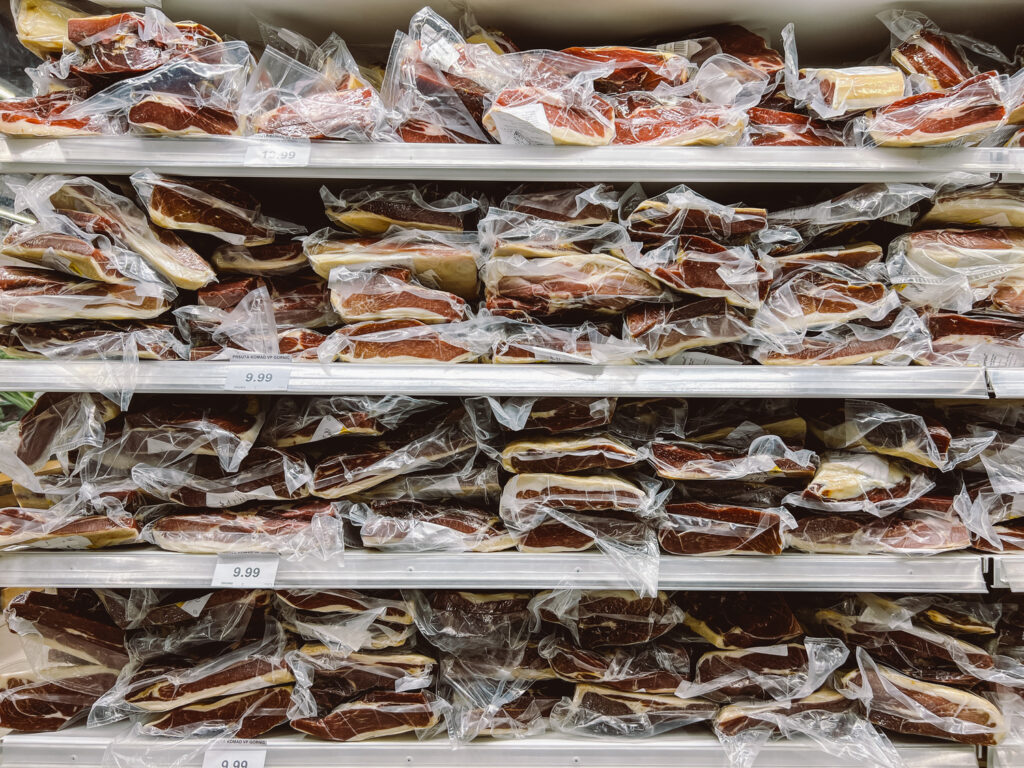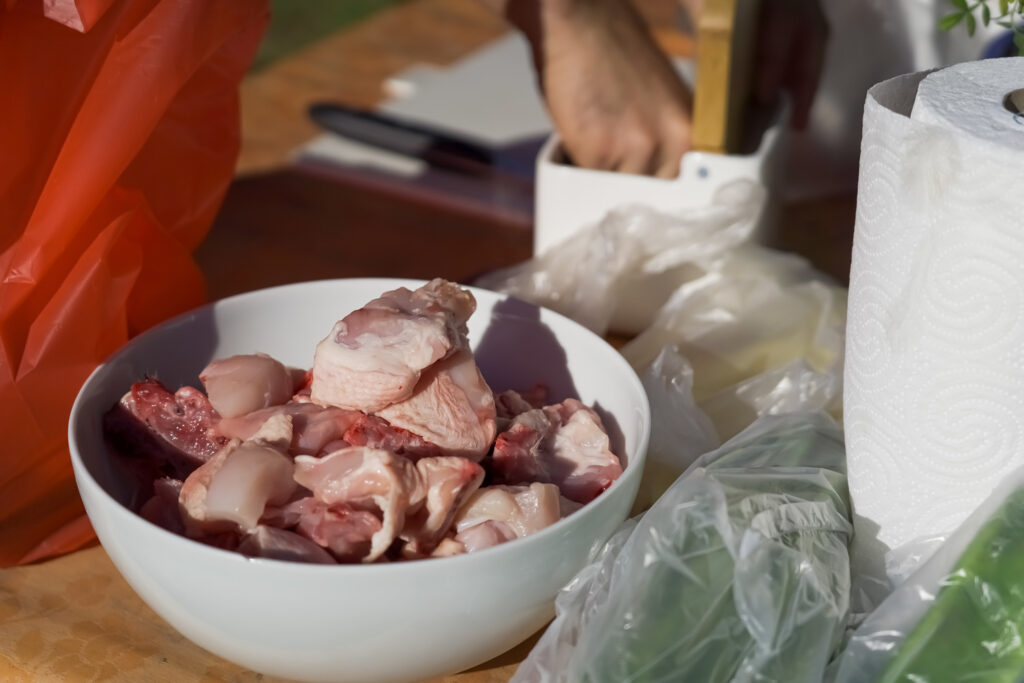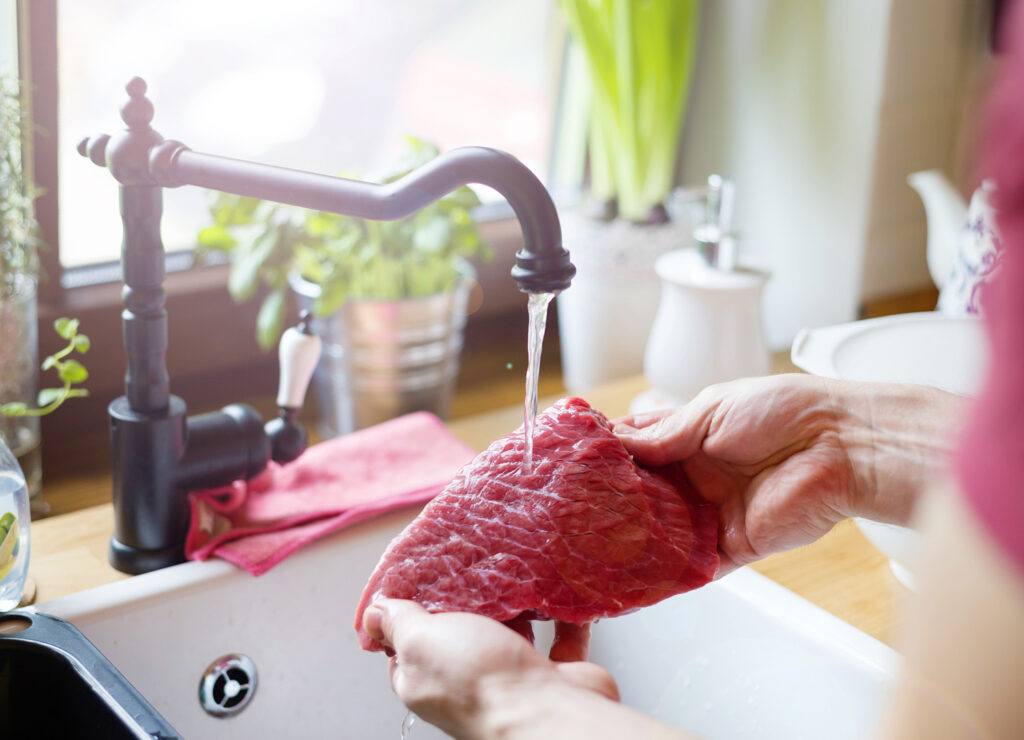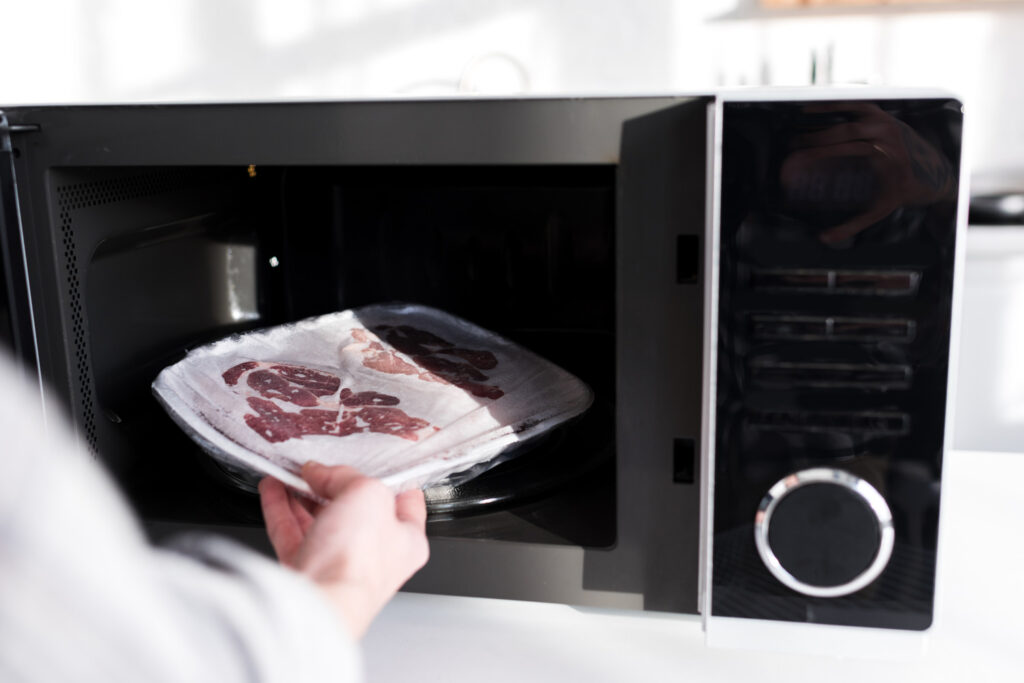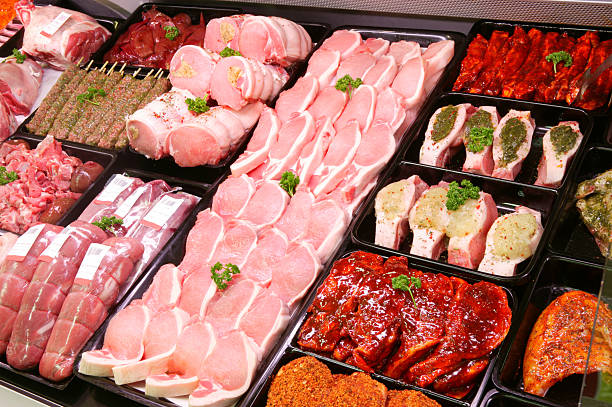It’s 30 minutes before dinner. You’re ready to whip up a delicious meal. But as you reach into the freezer, you realize the meat is frozen solid! Don’t panic – we’ve all been there.
Knowing how to quickly thaw meat can be a real lifesaver in the kitchen. But before you reach for that bowl of hot water (which is a big no-no!), let’s talk about why thawing meat properly is so important.
Importance of Safe Thawing Practices
How you thaw meat matters. If you don’t follow proper thawing techniques, the meat may enter the danger zone (between 4°C and 60°C) where bacteria multiply rapidly. This increases the risk of food poisoning, especially with high-risk meats like poultry.
So, how can you quickly thaw meat without compromising safety or quality? Let’s explore some safe and efficient thawing methods.
Safe Thawing Methods
1. Refrigerator Thawing
The refrigerator thawing method is the safest, but it does take longer. This method keeps your meat at a safe, consistent temperature, which prevents bacteria growth.
How to do it:
- Place your frozen meat on a tray or dish to catch any drips.
- For small cuts like chicken breasts, 4-6 hours in the fridge may be enough. For larger cuts or roasts, plan for 24 hours per 5 pounds of meat.
Tip: Pop your meat in the refrigerator the night before or a few hours before you need it, and it’ll be perfectly thawed and ready to cook when you are!
2. Cold Water Thawing
If you’re wondering how to quickly thaw meat but still want to keep things safe, the cold water method is a great option. It’s faster than using the refrigerator but still ensures the meat stays at a safe temperature.
How to do it:
- Seal your meat in a leak-proof plastic bag.
- Submerge it in cold water. Change the water every 30 minutes to keep the temperature low and safe.
- Smaller cuts of meat will thaw in 30 minutes per pound, while larger pieces may take 1-2 hours.
Tip: This method is perfect when you need meat thawed quickly but still want to avoid food safety risks. Be sure to cook the meat immediately after thawing to prevent bacteria growth.
3. Microwave Thawing
If you’re short on time, this might be the best option for you. It’s the fastest option, but it requires a little more care.
It’s important to remember that microwaving can cause the outer edges of the meat to begin cooking, so this method is best for smaller cuts or portions like chicken breasts or ground beef.
How to do it:
- Use your microwave’s defrost setting to thaw the meat.
- Rotate the meat every couple of minutes to ensure even thawing.
- Cook immediately after thawing since microwaving may partially cook the meat.
Tip: This method works best for smaller portions. You’ll need to watch it closely to ensure the meat doesn’t start cooking in the process.
Thawing Methods to Avoid
Some methods of thawing meat, though tempting, should be avoided at all costs:
Room-temperature thawing
Leaving meat on the counter may seem convenient, but it’s unsafe. When meat is left at room temperature, the outside can warm up to the danger zone while the inside stays frozen. This can result in bacterial growth.
Hot Water Thawing
Hot water can speed up thawing, but it can also lead to uneven thawing and start cooking the outside of the meat. The outside of the meat may reach unsafe temperatures while the inside is still frozen, making it a risky choice.
Thawing in Direct Sunlight
Thawing meat in direct sunlight may seem like a good idea when you’re in a rush. But this can increase the temperature of the meat, which leads to bacterial growth. Avoid thawing meat in a heated kitchen or near an oven.
Final Thoughts
Thawing meat quickly doesn’t have to be risky! By following these safe and efficient methods, you can enjoy delicious and worry-free meals.
Remember, proper thawing is not only about speed but also about ensuring food safety and preserving the quality of your meat.
Try these thawing methods and share your experiences! And always remember to prioritize food safety when handling raw meat. Happy cooking!

